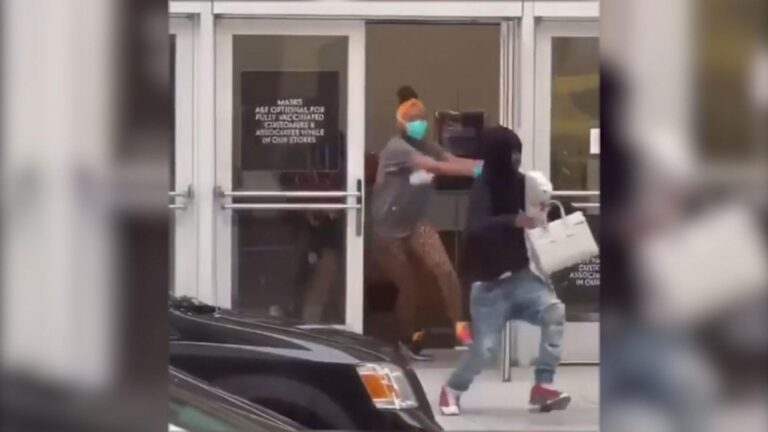San Francisco Shoplifting Video Sparks Debate Amid Crime Data Insights
A recent video capturing a shoplifting episode in San Francisco has rapidly gained traction on social media, igniting public anxiety about the prevalence of retail theft in the city. Despite the viral nature of the footage, city officials and law enforcement agencies have sought to provide a more measured perspective, emphasizing that such incidents are not indicative of a widespread surge in crime. This article delves into the incident, the official responses, and the broader landscape of property crime trends in San Francisco.
- Reported thefts rose modestly by 3.2% in the last quarter, remaining below the average increase seen in comparable metropolitan areas nationwide.
- When adjusted for population growth, property crime rates have actually declined by approximately 5% over the past five years.
- Community policing efforts have strengthened ties between law enforcement and neighborhoods, contributing to proactive crime deterrence.
Officials presented a comparative analysis of property crime statistics over the past three years, illustrating a relatively steady pattern despite sensational media coverage. This data underscores the complexity of the issue, cautioning against equating isolated viral incidents with a citywide crime wave.
| Year | Thefts Reported | Total Property Crimes |
|---|---|---|
| 2021 | 12,600 | 44,800 |
| 2022 | 13,000 | 44,100 |
| 2023 | 13,400 | 43,500 |
How Viral Content Shapes Public Views on Retail Crime
The rapid spread of the shoplifting video has amplified public fears about retail crime, yet city officials caution that such viral content often distorts the true scale of the problem. While the footage is unsettling, it represents a snapshot rather than a comprehensive picture. Data from law enforcement indicates that retail theft incidents have remained relatively stable, with only slight fluctuations that do not support claims of a dramatic increase.
Experts attribute this perception gap to several psychological and technological factors:
- Selective attention: Viral videos tend to highlight dramatic events, overshadowing the broader, less sensational crime data.
- Emotional impact: Graphic visuals provoke stronger reactions than routine crime reports, skewing public sentiment.
- Algorithmic amplification: Social media platforms prioritize content that drives engagement, regardless of its representativeness.
To foster a clearer understanding, officials encourage the public to review comprehensive crime statistics alongside viral media. The table below contrasts monthly retail theft reports with the viewership of viral videos, illustrating the disparity between perception and reality:
| Category | Monthly Incidents Reported | Viral Video Views (Millions) |
|---|---|---|
| San Francisco Retail Theft | 460 | 22 |
| Average in Similar Cities | 480 | 3 |
| Annual Theft Prevention Budget | $2.3 million | N/A |
Community and Business Advocates Promote Holistic Theft Prevention Strategies
Representatives from local businesses and community groups stress the importance of adopting balanced, multifaceted approaches to combat retail theft. They argue that while viral shoplifting videos attract attention, these isolated events do not fully capture the broader crime dynamics in San Francisco. Instead, they advocate for addressing underlying issues such as economic instability and mental health challenges, rather than relying solely on intensified law enforcement or punitive tactics.
Proposed initiatives include:
- Expanded youth engagement programs aimed at reducing the risk of theft-related offenses among young people.
- Increased funding for mental health and substance abuse treatment services to support vulnerable populations.
- Partnerships between police and social service providers to ensure compassionate and effective responses to theft incidents.
- Public education campaigns designed to foster community responsibility and theft prevention awareness.
| Area of Focus | Proposed Measure | Anticipated Result |
|---|---|---|
| Youth Programs | After-school mentorship and activities | Decrease in juvenile theft cases |
| Mental Health Support | Expanded counseling and rehabilitation | Reduced recidivism |
| Law Enforcement Collaboration | Joint initiatives with social workers | More effective, humane interventions |
| Community Awareness | Educational outreach campaigns | Greater public engagement in prevention |
Policy Strategies for Addressing Shoplifting Without Overstating Crime Trends
Policymakers are urged to adopt data-driven approaches that differentiate between isolated theft incidents and broader crime patterns. Increasing transparency through the regular release of detailed crime data can help the public and media form a more accurate understanding of retail theft trends, reducing the influence of sensationalized reports. Collaborative efforts involving law enforcement, business communities, and social organizations are essential to develop prevention strategies that emphasize rehabilitation and social support over purely punitive responses.
Recommended actions include:
- Targeted resource allocation: Concentrate efforts on identified theft hotspots rather than broad, generalized claims of rampant crime.
- Community engagement investment: Strengthen trust and cooperation through outreach addressing socio-economic contributors to theft.
- Media partnership development: Promote responsible journalism that avoids fear-mongering based on viral content or anecdotal evidence.
| Approach | Advantage | Implementation Method |
|---|---|---|
| Crime Data Transparency | Enhances public knowledge and trust | Publish regular, detailed crime reports accessible to all |
| Community Policing | Reduces crime through local partnerships | Deploy neighborhood liaison officers and community forums |
| Media Collaboration | Improves accuracy of public narratives | Conduct workshops and establish reporting guidelines for journalists |
Final Thoughts on Retail Theft in San Francisco
As discussions continue regarding the extent of retail theft in San Francisco, city officials maintain that isolated episodes, such as the viral shoplifting video, do not signify a widespread crime surge. Emphasizing the importance of comprehensive data and balanced responses, leaders advocate for measured strategies that address theft effectively without exaggerating the problem. Moving forward, the challenge lies in harmonizing public safety priorities with fair, evidence-based policies that tackle the root causes of theft while avoiding alarmist narratives.




